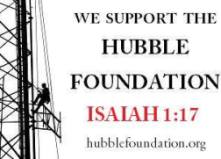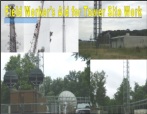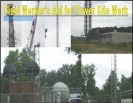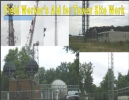Podcast: Play in new window | Download | Embed
Subscribe: Apple Podcasts | RSS
Part 1 – I had to break it down to prevent this from becoming a book. Part 2 will be out soon!
I had a great time, the only thing that would have made it better is free candy. I got to meet many superstars in the industry like Gette Hester, Liz Day, Art Pregler, Wally Rearden, and Todd Schlekeway. I got to discuss business with Doug Lee and a few others. I have to tell you that the wireless industry has so many good people in it. I could go on but I think that most of you would like to hear some feedback on the speakers, so let me move right into my feedback on what each person said.
Quick update – apparently I had everything wrong on the recent water tank fall, the family of the climber reached out to me to straighten me out. I will correct it but I really wanted to finish this first. I am updating the blog and will update the podcast out of respect for the family.
They had a lot of speakers, so I am going to fly through some of them. Now remember that this is my opinion of what each one said, my opinion! If you want more of what I thought, then listen to my podcast. I will have an extended version of each on there. More information is available at http://www.fcc.gov/events/workshop-tower-climber-safety-and-injury-protection if you want to see what they have first hand.
These people are making a difference in the industry. The measuring stick will come in 1 year, to see if the industry can shape up. Every one of you in wireless deployment can play a part to make this the safest industry if you only can be smart, be safe, and pay attention. Correct the problems.
More in-depth information is on the podcast! Search on iTunes for Wade4wireless and write a review now!
- Roger C. Sherman, Chief, Wireless Telecommunications Bureau, FCC – The opening remarks by Chief Roger Sherman of the FCC was a good start, got us off on the right foot.
- David Michaels, PhD, MPH, Assistant Secretary of Labor for OSHA – Dr Michaels kicked it off with his speech on how most of the accidents out there were preventable. Dr Michaels committed to doing everything he could to make sure the industry is as safe as it possibly can be with
- Kathy Pierce, Hubble Foundation – Then came Kathy and she brought the room to tears with her memory of how things happened the day she lost her son. She opened up about her son’s accident. She recounted that terrible day and how that accident should never have happened. This woman poured her heart out in front of a group of people who needed to hear it. This was enough to make you realize that change in necessary to prevent this from ever happening again! She recounted that horrible day when her son went up on that water tower in a wrong size harness only to never go home that night. It makes you realize that the people who get hurt or die in something like this aren’t the only people who suffer! The families of these people pay a dear price in loss and suffering. Many of them never get the answers they deserve.
- Dave Anthony, Shenandoah Tower Service – Boy, if someone like Dave ran every company I don’t think there would ever be an accident in the industry again! This guy took the safety and policies that he was able to implement in his company and shared them this group. He firmly believes that change needs to come from the top down. From the owners down to the climber. The attitude around the way that policies are laid out and given to the climber need to be more than writing in an employee handbook but preached on a daily basis. The climber needs to know that the leaders care as much as they do!
- Liz Day, City University of New York (CUNY) – to refresh your memories, Liz did the expose when she worked with Propublica, links here and here and here and here. This woman is a statistical machine! She talked about what she learned in the stories she got from people in the industry. She also pointed out that tracing the death and accidents in the industry was very hard because you can’t look at the carriers, like AT&T Wireless and Verizon Wireless, nor can you look at Black and Veatch and Bechtel, because the tower crews are very small companies, they are working for a contractor that when an accident happens the groups up the food chain simply pass it off as “Not my problem!”. She told a story about how one person’s family tried to sue one of the carriers only to lose because they were removed from the work and had statements in their contracts about safety.
- Bridgette Hester, Hubble Foundation – If you are reading this then you probably know Gette and her work with the Hubble Foundation. She had a presentation which you can get here. Gette explained the toll that these workers have just doing the job and traveling so much. So many workers are on the road and already have strained family lives. This causes distractions in the field when they start to worry about what is going on at home or how they missed their child’s first steps. It can become such a distraction that worked don’t pay attention, become angry, or very depressed.
- Wallace Reardon, Workers at Heights Health and Safety Initiative – Wally is a pretty outspoken guy that speaks his mind and he had a presentation which you can find here. Wally also brought up the fact that just because most climbers talk about safety, many do not practice what they preach. He mentioned how he would go to tower sites where work is being done only to find out that speed was more important than safety. Even recently he noticed that climbers are working faster with safety playing second fiddle to the deadline. Wally repeatedly said how most project managers or job leads would always end their conversation with the statement, “you will be done today, right?” This was to hammer home that they cared more about the deadline than anything else. Time and money are the priority, with safety becoming an inconvenience and afterthought. One more thing, Wally mentioned how angry most climbers get when they are away from home so long. I believe it was Wally that brought up how one of them even got suicidal due to a family crisis.
- Jonathan Campbell, PCIA – OK, first let me say this was the youngest looking guy in the room! I thought maybe he was fresh out of college. I know he is not that young, but when he is my age he will still look like he is in his 20s! Now, with that said, it is great that PCIA is getting involved and that they will get the carriers to push the safety agenda! To have the PCIA represent the carriers in this effort to save lives should really help the carriers become an active participant in industry reform since they provide so much work.
- John Johnson, Black & Veatch – John gave a pretty good opening speech that I really appreciated. He mentioned how B&V did all the safety training and yet they were still having problems in the field. The one thing that they had to implement was training on how to do the job. Then they started adding training for the tasks as well as the safety training and they started to see improvement. Listen, I have been no fan of B&V in the past because of the competition, but I have to admit what John said made a lot of sense. He said B&V put together a training plan that would cover the worker’s job as well as their safety needs. It really made sense.
- Craig Lekutis, WirelessEstimator.com – What can I say, Craig is a smart guy and it was great to hear what he had to say. He covered the stats and the climber’s plight in the field. This guy is in touch with the climbers and mentioned how many times the climber is pushed to meet the schedule.
- Art Pregler, AT&T – Art gave a speech on how AT&T is setting new safety standards for the industry from the customer perspective. They are working with these other groups to make sure that the safety message becomes a standard in any deployment. Art mentioned how they are working with NATE to improve climber’s safety from day one of the job.
- Paul Roberts, American Tower – Let me tell you, Paul can talk, this guy was fun to listen to and he made some good points. He mentioned that ATC does have climbers that take safety very seriously. These climbers under Paul’s watch have the right to not only stop work but to throw anyone off of the tower that is not actively 100% tied off. He also mention how he was trying to work with other tower owners to make sure all safety standards are practices while they are on watch. To do this we need a solid standard in place that all tower owners can agree on. If they truly can be the safety guardians of the towers. Paul brought up how there are several standards to be followed in this industry. He also recommended that we all read MIL-STD-882, I found 882E online here.
- Todd Schlekeway, NATE – Todd was there and had a good speech but the most important thing, to me, is when Todd mentions that NATE is working on a consolidated safety standard for the tower industry. Why is this so important? Because it would unite all of the other standards for everyone in the industry to work from. To me, this would be a very important step in uniting the industry, especially if all agencies could adopt it and follow it. Then the companies would adopt it and follow it.
- Scott Kisting, TIRAP Chair – Scott gave a rousing speech about TIRAP, a program which is reality and was christened at this event. That is making this a historic event. This is why this event happened. This is why the people in this industry are working together.
- Jonathan S. Adelstein, President, PCIA, and Former FCC Commissioner – Jonathon gave his commitment to the effort moving forward. He mentioned how PCIA would like to make wireless deployment move ahead safely and smoothly. If he can convince the carriers to work with their contractors to insure safety, then we can really expect the carriers to carry some of the burden. That would really help the industry in this time of need.
- Hon. Thomas E. Wheeler, Chairman, FCC – Mr. Wheeler was kind enough not only to make this event, give a speech, but show his support for the tower workers in the USA. This speech was something that should make all of the climbers be appreciated that the FCC commissioner is taking the time and resources to propose changes for the climbing personnel in the industry. The commissioner expects to see improvement in not only the fatality rate, but the accident rate seen among climbers. I believe he was reinforcing his commitment to the wireless deployment teams everywhere by supporting this initiative.
- Hon. Thomas E. Perez, Secretary of Labor – The Department of Labor has always been committed to worker safety. I believe that, thanks to Mr. Perez and the efforts of Dr Michaels, that the TIRAP program has full support of the DOL and will be used as a measuring tool for all climbing companies to follow. By working with the FCC and private industry Mr. Perez has worked diligently to provide a brighter future for the wireless deployment teams across the USA.
- You, the tower worker, foreman, crew owner, project manager – You didn’t think I forgot about you, the crews and companies that could not make this event did you? You play a key part in this effort! I took a vacation day, spent my own money to be there, just to keep all of you informed, so don’t let me down or the industry down! If you thought it was all about the people who showed up on October 14th, 2014, then you didn’t pay attention. Listen – here is where you can make a serious dent in the industry. I know we always say safety is an attitude, but its work! It’s money! It takes time! It is a team effort, and you, the tower crew owner, foreman, project manager, and the tower climber have the best chance to make this work! Don’t just ignore this or say it was done in Washington DC and that you have had no say! Take it seriously and make an effort!
OK, I gave you my feedback on each speaker. I bet you’re asking, will this initiative work? Are you willing to work to support this initiative? Well that is up to you, isn’t it? This isn’t the seat-belt law where the cops will be waiting to find you on the highway and give you a ticket so you can survive a crash. OSHA will be watching but they don’t have the resources that most police departments do. They are forced to come in after the accident and determine why it happened and make sure it won’t happen again. They will start to monitor accidents after the fact. If you want to prevent them from showing up, then make sure that you are accident free by following all the safety practices you can. Will you make sure that there are no more accidents, at least in your watch? Or will you say it’s somebody else’s job and that you have no control or that someone made you do something stupid. Maybe it’s time for you to take responsibility for your actions in your company.
If someone gets hurt, it has a huge ripple effect. If someone gets hurt under your watch then who is to blame? This program will require all of you, from the top down and from the bottom up to pay attention. Can you do that? Listen, accidents will still happen, but maybe we can reduce stupidity and arrogance.
I know so many climbers complaining about so many things. What if we all focused in the safety factor here, end to end? What if we take a moment to look at what is in our control? You are a climber then inspect you equipment, and know what the SOW says. If you are the foreman then did you set realistic expectations for the work and the schedule? If you are the project manager do you understand the time line and the limitations of the worker? If you run the crew did you put your worker’s well being first by providing them the tools, the gear, and the time they need to do the job safely and right? If you are the customer did you hire a crew you trust to follow and enforce safety practices and get paid? If you are the GC, did you make sure all your crews have been vetted properly and paid on time? How can you expect the crew to work safely when they don’t get paid?
You see, it’s not all on one person or one department. It takes an industry to act as a team. It takes effort on your part. It takes cooperation, communication, dedication and caring. Do you care? We will see a year from now, won’t we?
I want you to think about something, when the San Francisco Bay Bridge was built, an acceptable death rate was one life for every million dollars spent, link here and scroll down to 1933. There were 28 fatalities building that bridge. Do you know what the acceptable fatality rate is today? Zero point zero!
I will have a part 2 on this soon. It is too long for one post.
Thoughts, feedback, information? Tell me!
Gette’s presentation: http://wireless.fcc.gov/presentations/Concerns_Field.pdf
Wally’s presentation: http://wireless.fcc.gov/presentations/Wally_Reardon_Presentation.pdf
http://www.dol.gov/opa/media/press/osha/OSHA20141952.htm
http://www.fcc.gov/events/workshop-tower-climber-safety-and-injury-protection
http://www.dol.gov/opa/media/press/osha/OSHA20141952.htm
http://www.fcc.gov/blog/safety-and-broadband-must-go-hand-hand
http://social.dol.gov/blog/safety-and-broadband-must-go-hand-in-hand/
http://www.fhnfuneralhome.com/obituaries/Chad-Weller/#!/Obituary
Soon I will release my training for the SOW and more, to build your library of basic knowledge so you can advance in your job and the industry! So feel free to buy one of my books and maybe they will help you learn something that you didn’t know or teach someone who needs to know.
Kindle:
PDF books so you can buy with PayPal:
PDF books you can pay with Credit Card:










